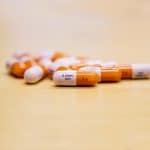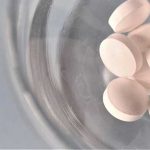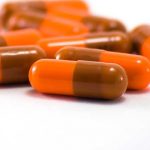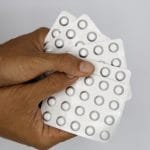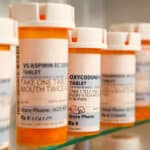- Vyvanse Abuse Potential
- Effects Of Vyvanse Abuse
- Signs Of Vyvanse Addiction
- Treatment For Vyvanse Addiction
While Vyvanse (lisdexamfetamine) is safe and effective when used as prescribed, it can be diverted and abused, potentially resulting in addiction and a variety of long-term health effects.
Vyvanse extended-release is a brand-name medication used in the treatment of attention deficit hyperactivity disorder (ADHD), as well as binge eating disorder.
Vyvanse Abuse Potential
Vyvanse’s ingredient, lisdexamfetamine, is classified by the FDA and DEA as a schedule II controlled substance. This means it has a high potential for abuse and may cause severe psychological or physical dependence.
However, compared to other common ADHD medications, like Adderall (amphetamine salts), Ritalin (methylphenidate), or Dexedrine (dextroamphetamine), lisdexamfetamine’s potential for abuse is somewhat lower for several reasons:
- lisdexamfetamine is actually a prodrug, meaning that it must first be metabolized in the digestive tract to form the stimulant drug dextroamphetamine before it has any psychoactive effect
- snorting or injecting lisdexamfetamine does not trigger a methamphetamine-like rush or euphoric drug high, unlike other prescription stimulants
- lisdexamfetamine takes up to 90 minutes to take effect, compared to 30 minutes (and less if snorted or injected) for Adderall
Effects Of Vyvanse Abuse
Like other ADHD drugs, lisdexamfetamine can be used to stimulate a pleasurable drug high in higher doses, as its metabolite dextroamphetamine increases dopamine release and feelings of pleasure and reward if taken in excess.
In addition, lisdexamfetamine and other prescription stimulants are frequently abused by high school and college students for their desired effects on the central nervous system, including:
- increased energy
- decreased need for sleep
- increased focus or mental clarity
- decreased inhibition
- appetite suppression
- improved athletic performance
Common Side Effects
Common side effects of lisdexamfetamine abuse include:
- anxiety
- diarrhea
- dizziness
- dry mouth
- dilated pupils
- increased heart rate and blood pressure
- sweating
- stomach or chest pain
- hyperactivity
- restlessness
- shaking
- trouble sleeping
- mood swings
- headache
- nausea
- violent or suicidal thoughts
- unusual weight loss
Signs Of Vyvanse Addiction
If used over a longer period of time, lisdexamfetamine can provoke the development of physical dependence and addiction, along with other signs of addiction that can include:
- increased tolerance to the drug, reducing its effects over time
- drug cravings and drug seeking behavior
- declining mental health
- unstable mood
- psychosis, including hallucinations, paranoia, and delusions
Other physical effects may persist after developing addiction, including elevated blood pressure, chest pain, heart palpitations, and arrhythmias.
Vyvanse Overdose
Central nervous system stimulants can be extremely dangerous if used improperly, whether that means they are used by those to whom they have not been prescribed or if they are used in higher doses, with greater frequency, or with other legal, illicit, or prescription drugs.
In the case of lisdexamfetamine, overdose effects can include:
- vomiting
- fever
- confusion
- panic
- aggressive behavior
- panic
- hallucinations
- seizures
- coma
Lisdexamfetamine may also trigger life-threatening medical emergencies, including heart attack and stroke, when abused by those with certain heart problems.
Vyvanse Withdrawal
The longer lisdexamfetamine is abused (and the more severe the abuse becomes) the greater the risk of developing a severe degree of physiological dependence, as well as increasingly severe withdrawal symptoms when and if you stop taking the drug.
Acute withdrawal symptoms following prolonged lisdexamfetamine drug abuse usually appear within 24 hours of your last dose and can last for a period of several weeks:
- anxiety
- drug cravings
- headache
- increased appetite
- depression
- fatigue
- low motivation
- hypersomnia, an increased need for sleep
- anhedonia, a condition in which you may have difficulty feeling pleasure from normal sources
While many do choose to work through lisdexamfetamine withdrawal cold turkey, a tapering schedule established by a medical professional may help reduce your eventual withdrawal severity by reducing your Vyvanse dosage over time.
Post-Acute Withdrawal Symptoms (PAWS) can occur in those who experienced a severe degree of lisdexamfetamine misuse and can involve lingering cravings and psychological symptoms that may persist or recur for months or even years to come.
Treatment For Vyvanse Addiction
Unfortunately, there are no specific medications set aside to treat stimulant withdrawal. However, medical supervision and a comfortable, safe environment are available to those working through lisdexamfetamine withdrawal in approved medical detox programs.
Once detox is concluded, lisdexamfetamine addiction can be professionally treated in either inpatient or outpatient rehab centers.
In either case, your treatment program can help you develop the mental, emotional, and social resources necessary to maintain your recovery.
Specific treatment options may include:
- individual or group counseling
- cognitive behavioral therapy
- motivational enhancement therapy
- peer support
- alternative therapies
- aftercare treatment plans
If you or a loved one struggle with prescription drug addiction, a form of substance use disorder, help is available to you. Contact Northeast Addictions Treatment Center today to learn more.
Keep Reading:
Sources
Written by
Northeast Addition Editorial Team
©2024 Northeast Addition Center | All Rights Reserved
This page does not provide medical advice.


